Horrific Inquiry: THE DESCENT (2005)
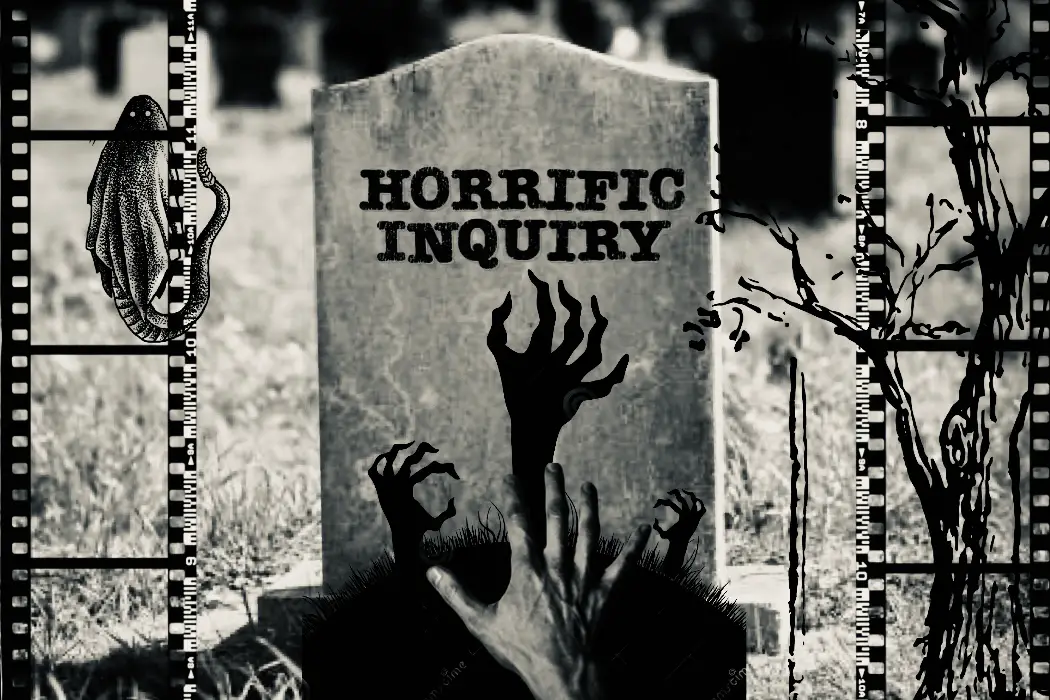
Stephanie Archer is 39 year old film fanatic living in…
Welcome back to the scariest, and at times goriest, column here at Film Inquiry: Horrific Inquiry. Twice a month, I will be tackling all things horror, bringing two films back into the spotlight to terrify and frighten once more. And occasionally looking at those that could have pushed the envelope further. Join us as we dive deep into the heart of horror, but warning, there will be spoilers.
“Sarah… don’t leave me like this.” – The Descent (2005)
Neil Marshall‘s The Descent is quickly becoming one of my cinematic summertime staples. And while it does not allude itself to being a seasonal venture, it feels perfectly nestled in the adventurous nature summer allows as the warmth welcomes one outside and the heat sends us searching for the cool release of the indoors. And for The Descent, its cavernous underbelly may bring relief, it delivers terror as well.
Written and directed by Marshall, The Descent is a film you literally feel. Its tight spaces and caverns basked in darkness deliver a visceral layer of terror that leaves viewers uneasy and jumping out of their seats. A form of physical catharsis, The Decent is in a league all its own. Inspired by the idea of a double feature, Horrific Inquiry dives deep into the heart of the earth’s underbelly this month, finding terror in both The Descent and The Descent 2.
Taking Away the Light
Heights, falling and claustrophobia have always gotten to me. To be honest, there is a part of me that feels driven to partake in the activities horror films prey on – that is until I watch them. The Descent falls into a long line of horrors preying on the visceral fears of audiences, cleverly bringing these terrors to the surface in a film that is at times hard to watch and experience.
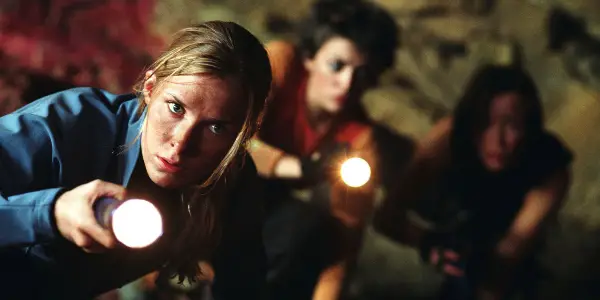
The pace of the film is brilliantly executed, moving when it needs to, yet holding on a moment when necessary. The Descent does not immediately dive into the terrifying aspect of claustrophobia, beginning with its central trio of river rafting, the space surrounding them wide and open. The camera even moves away from the girls as they approach their final rapid, bringing Sarah’s (Shauna Macdonald) family into the mix and expanding the world beyond their expeditions. The film starts to zero in on its underlying layers of regret, guilt and grief as the women dock, Sarah passing by her husband Paul (Oliver Milburn) to greet her daughter Jessica (Molly Kayll), Juno (Natalie Mendoza) and Paul exchanging glances that speak to the unspoken truth between them, their exchange going almost unnoticed.
The accident that follows is sudden and brutal, graphic from a distance, yet allowing your mind to fill in the blanks. The Descent transitions to the hospital, the colors of the cave taking over, the greens of the light sticks, and the oranges of the fire play to foreshadow the darkness Sarah has been thrown into against her will both here and later on. As Sarah awakens in the hospital, the claustrophobia of her grief and denial sets in, the lights in the hallway going out one by one and basking her in darkness. Her daughter was her light and now that light has gone out. It is a brutally devastating opening, one that gives a very rigid framework of the friends closest to her and of Sarah herself, giving authenticity to each moment they spend in the caves.
Creating Claustrophobia
As The Descent moves one year forward, audiences can see Sarah is still broken and stuck in her grief, as much as she tries to put on a brave face and push forward. Sarah feels changed, yet she masks her pain, her nightmares, and her grief as she hangs with Beth (Alex Reid), Juno, and the rest of the gang the night before they are to enter the cave. The claustrophobia was initiated as the lights in the hospital went out around Sarah, the camera moving towards a more extreme close-up. The Descent continues this formatting, increasing as Sarah suffers from her nightmares. Yet, this is only the groundwork, The Descent carefully pacing its impending terror.
As the group makes their way to the caves, the film starts wide, overhead shots taking in the expanse of the forest they are driving through. While the forest gives the sense of the wide open world outside the cave, it shows the compounding isolation the girls are entering, both above ground and below. As they walk through the forest, the space around the girls encloses further, tall trees surrounding them and further cutting them off from civilization – from help.
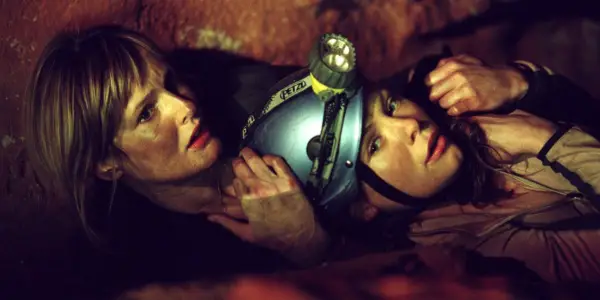
Groundwork is further laid for the film’s growing claustrophobia, its growing presence foreshadowed as Juno leaves the map of the cave behind and one of the women speaks to the importance of filing a flight plan and sticking to it. “Don’t go wandering off” she warns. As we later learn, Juno has broken all the rules compounding their impending doom. And while the only drawn-out moment in the film, The Descent utilizes exposition during their hike to the mouth of the cave to further foreshow its narrative direction as one of the women lists the risks associated with exploring caves and the darkness they will be bathed in – dehydration, disorientation, panic attacks, hallucinations, claustrophobia, and paranoia. Each of these will come to pass.
As the girls work their way into the cave and its tunnels, The Descent welcomes tight and intimate filming, extreme close-ups catching each muscle, each moment of wonder and terror in the eyes, further creating a deepening sense of claustrophobia in its audience. This is especially true as they each work their way through the tight tunnels throughout the cave. As they enter the mouth of the cave, we begin to see their individual personalities that will drive their character’s reactions to the subsequent cave-in and realization they are not where they think they are. Holly, even when told not to, races down the rope to the inside of the cave, while Sarah shows how truly on edge she is as a flock of bats flies towards her.
Up until this point, The Descent has worked to set its stage. As the group works one by one through the second tunnel, Sarah gets stuck, an impending cave-in heightening the intensity of the claustrophobia and escalating the reveal of the true danger they are in. From this moment, The Descent never allows your adrenaline-fueled catharsis to return to a baseline. Following the cave-in, Juno reveals that she has brought them to a new uncharted cave system, diverting from the flight plan she filed. She had wanted them to discover it together, as well as reconnect with Sarah in the face of her deceit and sorrow. Juno is driven both by ego and regret and it doesn’t take long for the injuries to begin piling up in the wake of her decisions.
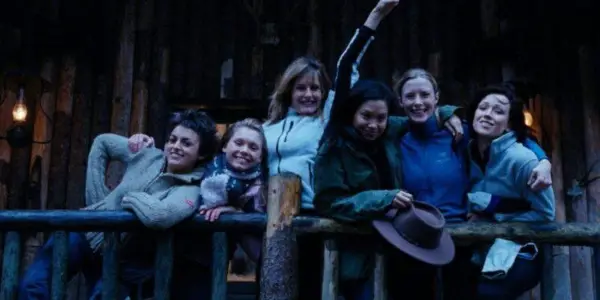
As one of the cavern walls shows cave drawings of two entrances, the girls begin to fight the claustrophobic effects of their isolation, while a new terror rises from the darkness.
The Monsters
The Descent excels in its multilayered display of horror. If the visceral claustrophobia of the caves wasn’t enough, the earth’s underbelly is further inhabited by monsters evolved by the darkness. From the moment they are in the caves, these creatures are always on the peripheral. First, they are a questionable appearance seen only by Sarah, a shadow in the distance that has more form than a shadow should. As the film progresses, so does their appearance, from silhouettes to a full blow, and incredible, jump scare in the video camera, their inclusion is as cleverly paced as the claustrophobia itself.
But the monsters become more than the graphically violent and brutal ones on the screen. They begin to take on a more metaphorical representation in a physical form. At various times throughout the film, audiences will find themselves questioning whether Sarah is the monster or Juno. Is it the darkness that is the lurking demon or is it just a physical being? Or is it the emotional monster, the overwhelming and encompassing brutality of grief and remorse? And finally, is the monster each and every one of us – do we all have the ability to evolve in the darkness?

As the creatures finally emerge in full form, the fighting becomes an incredible showmanship of editing and choreography, the cinematography of orange and green lighting constantly building the intensity as it flickers off the walls and off the individuals, flickering between the light and the darkness. Similarly striking are the screams of Juno and the creatures, their shrillness mirroring pitch and speaking further to the ability we all have to become the monsters and evolve in the darkness. The film is not coy with this idea though, Juno taking the metaphorical and driving it into the literal as she accidentally plunges an axe pick into Beth’s neck, subsequently slinking off into the darkness to escape what she has done – in essence becoming the creatures she has been fighting.
From this point forward you understand there have been monsters literally hiding everywhere, and the film works with this realization to show how easily they have achieved the unseen. The intensity of the fighting and the creatures gives way to the claustrophobia, enhancing it further as there is no escape and nowhere to run. The film waits until this point as well to welcome the gore. A graphic depiction of the creatures devouring Holly, invites the same treatment of intimacy awarded to the cavers at the beginning of the expedition, extreme close-ups capturing the grotesque evolution and further connecting the cavers with the monsters themselves. Are we any different when survival is on the line? While this could encompass any one of the cavers, this specifically falls to Sarah and Juno as they too evolve as the film progresses. Much of their evolution works to authenticate the sequel and deliver the impact of the film’s conclusion.
Sarah’s Sanity
There has long been a theory that Sarah was the actual monster of the film. The theory posits that Sarah actually killed all her friends, an alternative version of the film showing that she never left the cave. The Descent appears to lean into the questionability of Sarah’s sanity early on, giving the film an even deeper layer of grief and tragedy as it moves along. There is a constant inner argument of emotions towards Sarah, the film constantly moving our feelings and Sarah through various transformations.
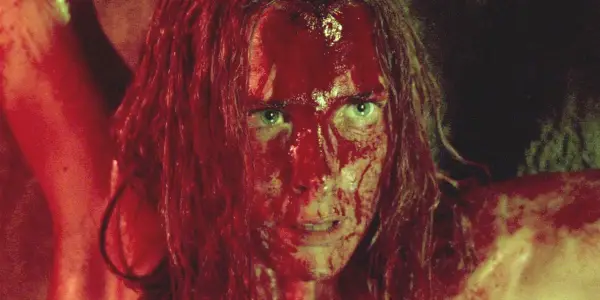
It all starts with the night before they enter the cave. Sarah has brutal nightmares displaying how fresh and raw her grief still is. She may be able to mask it while awake and around others, but she is defenseless in the dark. As Juno is waking everyone up and preparing to leave, Sarah is shown taking prescription medication. Audiences can easily deduce that this medication is in response to the lasting trauma she has endured from the last year following the accident and the death of her daughter. The film up to this point has also been coy in Sarah’s physical and emotional interaction with her husband. Distant, it’s almost as if Sarah always knew her husband was cheating on her – just not with whom.
The pills are a subtle element in the discussion of Sarah’s sanity. Not in the fact that she is taking them, but in their absence down in the cave. The film never reveals how long the women are trapped, missed doses quietly an unspoken element that could play into Sarah’s potentially degrading psychosis. Mixed with nerves that are already on edge the moment they enter the cave following a swarm of bats and bloody finger scratches on the cave walls, Sarah seems primed for a breakdown.
With this subtle detail in play, it is important to note that initially, Sarah is the only one that sees the creatures at first, one of the sightings even paired with a child’s laughter, the grief once again closing in on her, possibly in the form of something externally threatening. If it wasn’t for the camera capturing the monsters themselves, there would be no proof for the audience and the rescuers in the sequel to validate that maybe it really wasn’t Sarah. But it still leaves in question, were the tricks of the mind in the flickering of shadows enough to trigger Sarah? Or did her sanity stay intact longer than she is given credit for, only the realization it was Juno that betrayed her and Beth’s death the catalyst to her emotional turmoil.
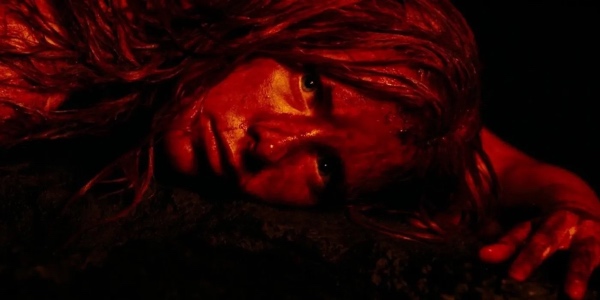
The Descent shows the audience too that Sarah is actually capable of murder. Her mercy killing of Beth, the killing of the creatures and leaving Juno to die after putting the axe pick in her leg each work to validate Sarah’s ability to take a life. Following Beth’s mercy killing, Sarah’s subsequent battle with the creatures snaps something inside of her, bringing her sanity further into question. It is at this moment in the film, as she rises from the pool of blood, Sarah takes on an inspired Brian De Palma feel as she is strongly reminiscent of Carrie, the blood stains smearing and dripping off her face and hair. She looks feral, yet in control. It’s almost as if in this moment, Sarah is reborn.
Conclusion:
The Descent ends on a final jump scare, proving it is far from done. Both this ending vs the alternative leave a lot in question. Did Sarah really get out? Was it all a dream? Has her grief transformed and been reborn? There is much left to question, and the adrenaline high The Descent leaves us on only keeps these questions churning, as well as yearning for more. And with a sequel just around the corner, the horrific mysteries of the earth’s underbelly are far from over.
Watch The Descent
Does content like this matter to you?
Become a Member and support film journalism. Unlock access to all of Film Inquiry`s great articles. Join a community of like-minded readers who are passionate about cinema - get access to our private members Network, give back to independent filmmakers, and more.












